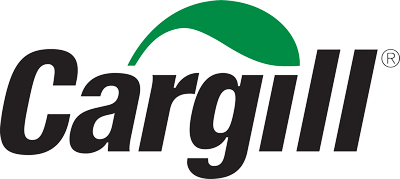- VIEW ALL ARTICLES
- Zinc-free success starts with the sow
Zinc-free success starts with the sow
With Katie Stephen, Swine Technical Sales Manager

Improving sow nutrition to overcome some of the challenges associated with the removal of therapeutic levels of zinc in post weaning piglet diets can have a positive impact on piglet performance, says Cargill’s technical pig specialist, Katie Stephen.
“We need to get piglets off to the best possible start and–adopt a prevention rather than cure mindset,” she adds.
“While new post-weaning piglet diets are crucial, a more holistic approach will be beneficial, looking at all aspects of production that contribute to piglet success. And we should look particularly at sow management and nutrition.
“Adjusting sow diets with the aim to improve colostrum quality, as well as her gut microbiome will be beneficial to piglet performance.”
And sow feed products such as LivaPig® have been shown to have a very positive impact on the piglets’ health status and subsequent performance by improving colostrum quantity and quality.

LivaPig® is a precursor for nitric oxide production and is based on the same principle used in performance-enhancing supplements for athletes It is proven to increase blood flow and therefore the supply of oxygen and nutrients around the body. In the case of the sow, it increases the flow of nutrients to reproduction tissue and piglets in utero.
Added to transition and lactation diets, LivaPig® has been shown to reduce stillbirths and increase birthweights with fewer smaller piglets born, resulting in an increase of 0.5 piglets weaned per litter
“We’ve also recorded that sows fed LivaPig® had a quicker farrowing time which improves piglet viability compared with piglets born during a longer farrowing process when compared with a standard sow diets.
“When it comes to supporting the sow’s gut microbiome, a good start, in broad terms, is to promote the ‘good’ bacteria and reduce the prevalence of ‘bad’ pathogenic bacteria that the piglets may become exposed to,” she adds.
Approaches to reduce the sow shedding pathogenic bacteria such as E. Coli and Salmonella which may be picked up by her piglets will help to support the litter health status.

Ms Stephen suggests that the diet can bring improvements by including a combination of fibre types, antioxidants and organic acid blends with essential oils. These ingredients in the diet influence the ‘good’ gut bacteria to flourish and help to maintain the correct gut pH to prevent the ‘bad’ bacteria taking over.
Other sources of bacterial challenges should be minimised. “Water hygiene is a top priority to reduce bacterial load, for both sows and piglets.
Regular water checks for bacterial contamination is good practice and there are well-proven options for treatments such as organic acid blends and hydrogen peroxide based products.
“The aim is to reduce as much of the bacterial challenges as possible, pre and post farrowing, and to minimise stress around farrowing,” she adds.
GET PIGLETS OFF TO A GOOD START
- Take a holistic approach by considering aspects of management that may negatively impact sow and piglet performance
- Embrace new technology used in sow feed products proven to improve colostrum quality and quantity and minimise stress by reducing the farrowing time
- Minimise the bacterial challenges from the sow and the environment
- Consider proven feed products that can support the sow and piglet in utero, during farrowing and in lactation
- Ensure piglets are receiving the correct amount of colostrum

